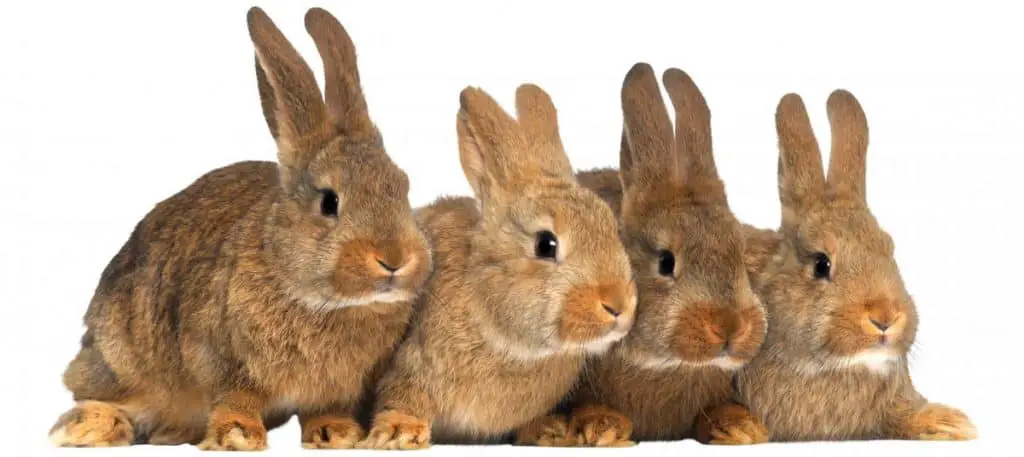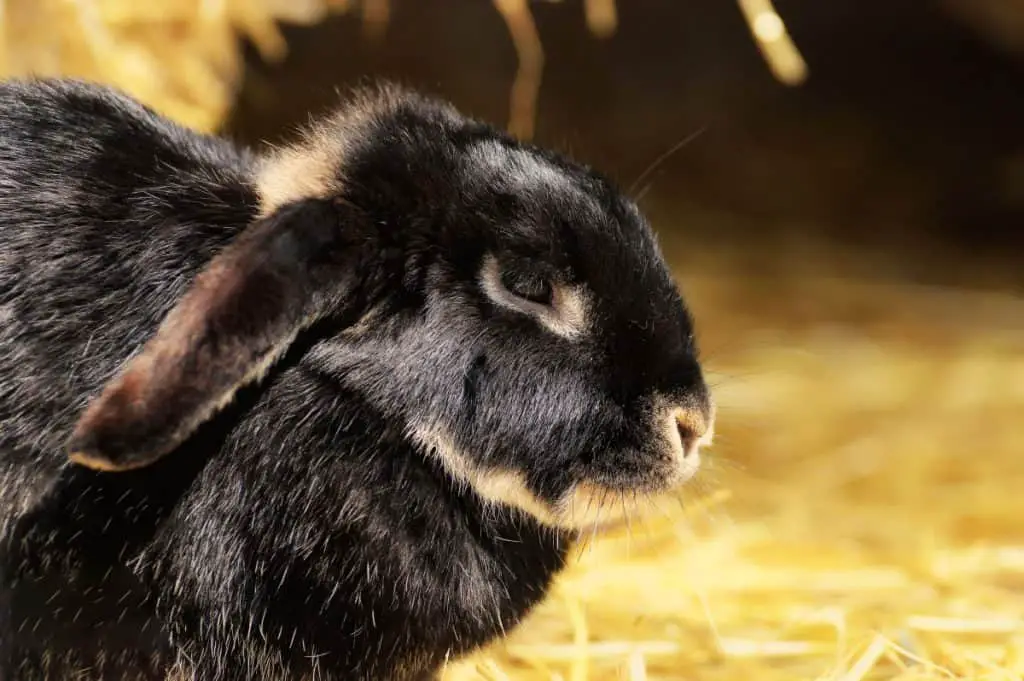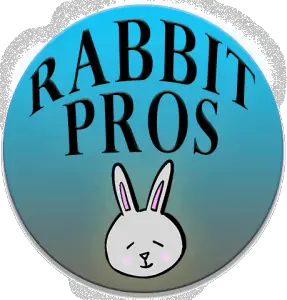Disclosure: We may earn money or products from the companies mentioned in this post.
We know about how rabbits tend to multiply very quickly and in large numbers too. This is one of their best survival adaptation strategies as a species. Rabbits also tend to grow or mature very quickly which is another survival strategy, and this applies even to the domestic rabbits that we keep as pets. But do you know when your rabbit is going to stop growing or at what age your rabbit will be full-sized?
Rabbits stop growing when they reach physical maturity and that happens between the age of 5 and 18 months. Maturity varies based upon the breed of rabbit. Large rabbits mature later than smaller-sized breeds. Large rabbits stop growing between 7 and 18 months of age while smaller rabbits mature at 5 to 7 months
As bunnies grow, just like humans, they also have different nutritional needs and undergo different changes in behavior. I grew up with bunnies, and my family has taken care of them for generations and so believe me when I say that to be a witness to their development and growth is one of the most rewarding experiences of being a bunny owner.

Terms For Rabbits By Age
Before we go into the details of rabbit growth I’m sure there is a lot of new pet or rabbit enthusiasts out there that want to know what a baby rabbit and an adult rabbit are called. Rabbits are more often called bunnies whether they be baby rabbits or adult rabbits but there is a proper term used to distinguish baby rabbits from adult rabbits.
The term “Rabbit” refers to the species and doesn’t indicate adult, juvenile, or anything to do with the age of the rabbit.
The proper term for a baby rabbit is “Kit” or “Kitten” just like with feline species. However, the most common term for a baby rabbit is “Bunny”. However, the word “bunny” tends to be very imprecise because people use to also refer to any cute rabbit regardless of age.
When rabbits are fully grown, they are more commonly called “Doe” or “Buck” which refers not just to their age but gender. A female rabbit is called a “Doe” while a male rabbit is called a “Buck”.
Origin For The Word Bunny
The word “Bunny” is believed to have been derived from the word “Coney” which was an 18th-century word that was what people called rabbits at the time. Soon the word morphed into “Cunny”. This became problematic because it sounded like a cuss word, so people replaced the C and the B, and the word Bunny was born.
People, I guess, loved the word Bunny so much that through the years it became a term to refer to all rabbits and not specifically to whether it’s a baby or fully grown.
Telling How Big A Rabbit Is Going To Get
You can approximate how big your bunny is going to get based upon its breed. However, since our research shows that the most popular pet rabbit is a mixed breed, it’s often very difficult to know the breed of a pet bunny if you haven’t personally seen the parents.
however, I can give you some general information about the size of pet rabbits.
The average domestic rabbit breeds grow up to about six pounds and about the size of a small loaf of bread. Nearly all pet rabbit breeds are between 5 and 9 pounds. There are outliers on the smaller and larger size, but these bunny’s size as kits would warn you of their unusual size.
In a previous article, I created a table of the size of various rabbit breeds, but I’ll summarize that information here.
Small or dwarf breed rabbits can weigh from 2 lbs to 5 lbs. Medium-sized rabbits weigh from 6lbs to 10.5 lbs while large rabbits or giant rabbit breeds weigh more than 10.5 lbs and can even regularly weigh as heavy as 20lbs.
When Common Rabbit Breeds Stop Growing
We’re not going to list all of the common pet rabbit breeds here, but we’ll list the most common and at what age each stops growing. But first, let’s get a broader understanding.
3 Factors That Affect When Be Full Sized
Breed
As mentioned, each rabbit breed reaches full maturity at different times, and that is primarily driven by the adult size of the breed.
Small rabbit breeds rarely grow past 5 lbs while giant rabbits grow to more than 10 lbs. Smaller rabbit breeds also reach full maturity at 5 to 7 months and large rabbit breeds can reach maturity at 18 months.
Genetics
Some rabbits tend to be smaller or larger than others even if they are of the same breed. This is based purely on their genes or genetics.
They probably got this gene from their parents who are also smaller or larger than normal for their breed.
All breeders choose their does and bucks to nurture specific characteristics and one of those characteristics is often size.
Care
Owners play a big role in rabbit growth. Not feeding rabbits with the proper diet or not feeding them enough will most likely slow down their growth and might even limit not only their adult size but their adult health.
Tabe Of Age When Specific Rabbit Breeds Stop Growing
| Rabbit Breed | Max Weight | Age Of Physical Maturity |
|---|---|---|
| Netherland Rabbit | 2.5 lbs | 4 to 5 months |
| Dutch Rabbit | 5.5 lbs | 6 to 7 months |
| Holland Lop | 4 lbs | 6 to 7 months |
| Mini Rex | 4.5 lbs | 6 to 7 months |
| English Angora | 7.5 lbs | 7 to 8 months |
| Harlequin | 9.5 lbs | 8 to 9 months |
| French Lop | 15 lbs | 9 to 10 months |
| Standard Rex | 10.5 lbs | 8 to 9 months |
| Flemish Giant | 22 lbs | 12 to 18 months |
I want to make a quick note here that physical maturity is not the same as sexual maturity. Rabbits can breed before they reach their full adult size. If you want to learn more about this, check out this article about rabbit pregnancy.

Help Your Rabbit Growup Healthy
It’s important to understand that the care you give your bunny is essential to your pet bunny’s healthy growth. Not providing them with the proper care can stunt their growth.
There are different ways in which you can help your rabbit reach their ideal weight when they finally reach full maturity.
Proper Living Arrangements
You need to ensure that your rabbits are always comfortable whether they be living indoors or outdoors in cages/hutches. This means that you provide the necessary amenities for your rabbits to keep them cool during the summer months and to keep them warm during the winter months.
Rabbits tolerate cold more than heat but it doesn’t mean that freezing temperatures won’t be challenging for them. Keep your rabbit hutches warm by adding more hay to their beddings so they have more material to snuggle into and make sure that water does not seep into their hutches.
If you have an outdoor rabbit, you probably should read this article for more details about keeping your rabbit warm in the winter.
In the summer, it’s essential that you provide adequate water during the hotter months and keep your bunnies in the shade so they won’t suffer from heatstroke. Honestly, water is always essential, but it’s even more so in the hotter months when a rabbit will drink 3x their normal water.
Cleanliness also plays an important factor when it comes to a rabbit’s growth. Rabbits don’t feed on wet hay and ingesting wet hay can also cause stomach troubles and health problems that in turn may lead to stunted growth.
Quality Diet
Rabbits need quality food when they’re fully grown but they need it more if they are to reach their ideal weight.
A rabbit diet is composed of 80% hay so make sure to provide your pets with adequate nutrition.
They also need quality leafy greens and avoid giving them too many treats or pellets. Bananas are good treats but giving too much will cause them more harm than good because this fruit contains too much sugar
If you have any doubts about the best diet for your new rabbit, you must take a few minutes to read this veterinarian-written article about the ideal rabbit diet.
Well-Hydrated Rabbits
Rabbit health is closely connected to a rabbit’s gut. Good digestion means a healthy rabbit and water aids in digestion.
This means it’s essential that you make sure that your rabbits always have access to clean water.
For outdoor rabbits, you’ll be providing fresh water multiple times a day during freezing winter days and summer days when the heat is over 90 degrees Fahrenheit.
In the winter, we provide warm water to keep it from freezing for a little longer.
In the summer, we provide cold water and on the hottest days, we’ve even provided our outdoor bunnies with iced water. Pro Tip – A big chunk of ice lasts a lot longer than a lot of little chunks.
I hope this article answered your questions about when your rabbit is going to stop growing, but if it didn’t be sure to jump over to our group of rabbit friends on Facebook and ask the good people there to share their personal experiences.
